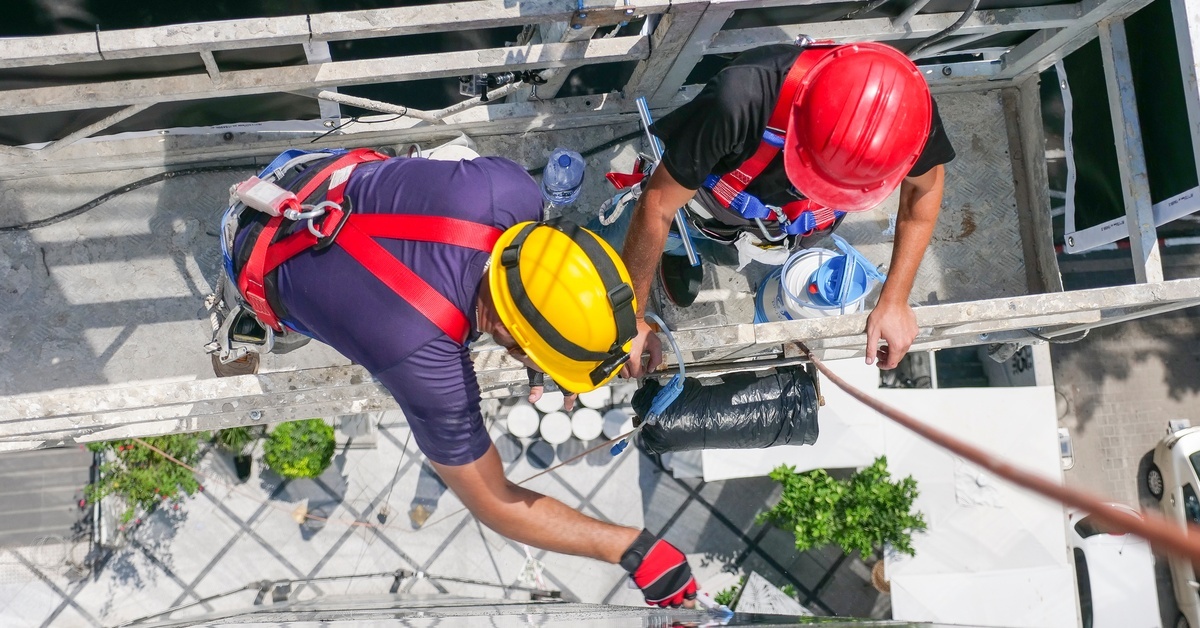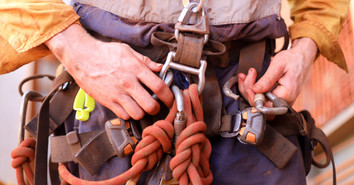Picture yourself suspended in the air, relying on your gear to keep you safe and steady. The quality of your climbing rigging equipment can make all the difference. It’s not just about having the right tools; it’s about how those tools fit the job at hand. Whether scaling a rocky cliff, working high above the ground, or even rescuing someone in need, choosing the right equipment plays a huge role in both safety and performance.
Understanding your gear is about knowing which materials can withstand the job, grasping how weight capacity affects safety, and making sure every piece works seamlessly together. By the end of this guide, you’ll have a clear understanding of how to make smarter choices for your climbing or rigging needs. Whether you’re a seasoned climber or just getting started, the right equipment will help you climb higher, safer, and with more confidence. Gear up for an adventure—let’s get started!
Why Choosing the Right Equipment Matters
The proper climbing rigging equipment preserves your safety while improving your overall climbing experience. High-quality gear designed for the task reduces the chances of accidents caused by subpar or mismatched tools. For instance, a durable rope and secure harness can mean the difference between a smooth climb and a hazardous slip.
Tools that are purpose-built for your climbing needs make the process more predictable and manageable. Picture trying to maneuver with a harness built for industrial rigging during a recreational climb—your movement would feel restricted, slowing you down.
Longevity also comes into play. Investing in reliable, well-constructed equipment means your gear lasts longer and performs better under repeated use. Equipment built with durable materials resists wear and tear, saving you money and frustration over time.

Factors To Consider When Choosing Climbing Rigging Equipment
Type of Climb or Job
Different climbing scenarios demand different tools. Recreational climbers need lightweight gear that doesn’t add unnecessary load. Dynamic ropes and compact harnesses work perfectly for this purpose.
Rescue operations, on the other hand, prioritize heavy-duty, reliable equipment capable of supporting multiple loads or unusual forces. Meanwhile, tree climbers often rely on specialized slings and pulleys meant for vertical movement through dense spaces.
Industrial rigging adds yet another layer of demand, as this type of climbing often involves massive loads and dangers. Heavy-duty carabiners, static ropes, and certified anchors are non-negotiable for such jobs.
Weight Capacity
Climbing equipment must handle the combined weight of the climber, gear, and rigging system. Exceeding recommended weight limits puts unnecessary stress on the equipment and leads to wear or outright failure. For example, a carabiner rated for 22 kN (kilonewtons) is designed to handle specific forces—up to thousands of pounds!—but will fail if that force is exceeded.
Planning for the weight also includes accounting for dynamic forces, like sudden drops or movement. Overloading gear can compromise not just equipment but your safety and the safety of everyone in the system.
Material Durability
The materials used in climbing gear affect how well it performs and how long it lasts. Nylon ropes, for instance, offer excellent shock absorption, making them great for dynamic climbs. On the other hand, Dyneema slings, known for their toughness and low stretch, excel in static applications but aren’t as abrasion-resistant under heavy friction.
Environmental factors also affect performance. Steel carabiners stand up well against abrasion but might be too heavy for certain types of climbing, while nylon gear tends to degrade faster in UV or constant exposure to moisture.
Compatibility with Other Gear
Gear that doesn’t function well together creates significant risks. For example, a carabiner that doesn’t lock securely when paired with a particular belay device could slip during use. Properly matching your ropes, carabiners, pulleys, and anchor systems prevents any weak links in your setup.
Climbers should organize and test their rope rigging equipmentahead of time. Mismatched rigs may not only underperform but also create dangerous situations, such as rope jams or unstable loads.
Essential Climbing Rigging Equipment Overview
Ropes
Dynamic ropes stretch under pressure, absorbing the impact of a fall, making them ideal for most recreational climbing. Static ropes, on the other hand, remain rigid and are better suited for rescue or industrial purposes. Key features to consider include the rope’s diameter (affecting weight and handling), length (allowing for sufficient movement), and stretch factor (impact absorption).
Carabiners
These versatile connectors are indispensable for climbers. Locking carabiners offer added security for anchor points, while non-locking versions are useful for quickdraws or less critical connections. Screw-gate carabiners strike a balance by allowing manual control over locking.
Pulleys
Pulleys are used to manage heavy loads or distribute weight more effectively. Rescue pulleys often feature advanced mechanisms for hauling injured individuals, while climbing-specific models prioritize lightweight designs for portability. For industrial applications, pulleys are larger and more heavy-duty to handle extreme weight.
Harnesses
A well-fitted harness provides comfort and safety. Recreational climbers often opt for lightweight, padded harnesses with adjustable straps. Industrial workers or arborists might need heavier-duty harnesses that offer additional support for tool attachment.
Slings and Anchor Systems
Strong slings act as critical connectors to anchor points. A variety of materials and loop configurations mean there’s an option for every situation, from attaching ropes for tree climbing to setting up belay anchors on rock faces.
Other Accessories
Helmets are a must to protect against falling debris or impacts. Belay devices simplify rope management and braking during descents. Ascenders and descenders aid vertical progress or controlled lowering. Finally, gloves reduce hand strain and protect against rope burns.

Safety Tips for Using Rigging Equipment
Inspect Your Gear Before Use
This means checking ropes for fraying, carabiners for cracks, and slings for visible wear. Knowing your equipment is free of damage eliminates one major risk factor during a climb.
Practice and Experience are Key
Misusing equipment, even unintentionally, leads to accidents. Learn how to handle your gear effectively by training with professionals or experienced partners.
Stick to Weight and Force Ratings
Overloading even a single component of your system weakens it, increasing the chance of failure. Always check the weight-bearing limits of your gear before setting up.
Use Backup Systems
Redundant anchors or safety lines increase your chances of staying safe should one system fail. Prepare for worst-case scenarios by having more than one safety measure in place.
Final Thoughts…
Climbing pushes you to trust your instincts, your skills, and, most importantly, your gear. The right rigging equipment is the foundation of your confidence and freedom as you ascend. Choosing carefully transforms every climb into an opportunity for growth and adventure.
Take this as a chance to assess your current setup. Maybe it’s time to retire that frayed rope or add a versatile pulley to your kit. Each piece of gear is an investment, not just in performance but in the experiences it unlocks. The mountains, trees, and skies hold endless challenges, and with the right preparation, you’re ready to take them on.
Every piece of gear you choose brings you closer to success. Equip yourself thoughtfully, climb boldly, and enjoy every step of the adventure ahead. The heights are waiting for you.

